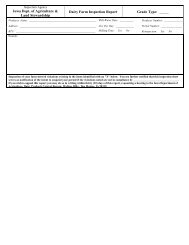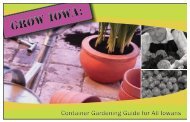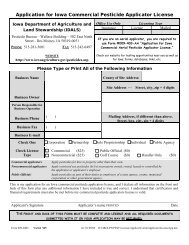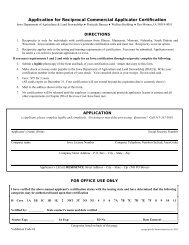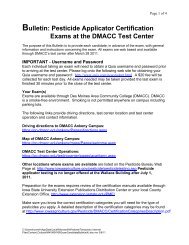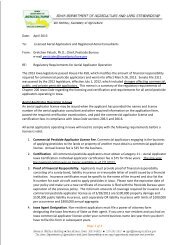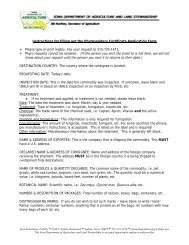Exhibit C: Detailed Background, Work Group Recommendations
Exhibit C: Detailed Background, Work Group Recommendations
Exhibit C: Detailed Background, Work Group Recommendations
You also want an ePaper? Increase the reach of your titles
YUMPU automatically turns print PDFs into web optimized ePapers that Google loves.
DNR are looking at HUCS in conducting a rapid watershed assessment for the state, helping<br />
to identify risk.<br />
Factors in identifying a site should include potential storage capacity, ability to both<br />
implement and study, ideally in the Iowa/Cedar basin, a community that was impacted in<br />
2008 yet somewhat isolated (i.e. the top of the watershed) to quantify results, ability to<br />
collect soil moisture data, an area with a gaging station or recommend installation of a gage<br />
in the area, and an area where cities, utilities, and drainage districts will participate<br />
voluntarily. The merits of an active vs. passive system were discussed again.<br />
Education will be an important component of any project. The public will want to believe<br />
that something will help without understanding all of the complexities. Linda Kinman<br />
suggested that an institution like the Science Center of Iowa could install a rainfall<br />
simulation model to assist with education. Witold Krajewski said even zooming in with<br />
Google Earth allows one to realize the impact of a drainage area.<br />
Tiling issues were discussed. Rick Cruse of the Iowa Water Center asked if studies exist on<br />
the impact of tile. Linda Kinman said tile may speed flow and short‐circuit the ability of soils<br />
to remove contaminants, and agreed that we need to know more about the benefits and<br />
consequences of tile drainage. Kirk Siegle stated that tile allows a more controlled flow of<br />
runoff from agricultural fields which may allow the soil to act as a sponge, thereby reducing<br />
some flow – a give‐and‐take impact. John Goode asked if tiles could be replaced with a<br />
structure that would impede the water flow. Perhaps some storage could be achieved from<br />
natural ponds. Jim Gillespie commented that some drains are overtaxed and not draining<br />
properly. Steve Hopkins asked if a targeted retrofit could help. Tom Oswald said<br />
compensation should be considered for crop loss and inconvenience. Leah Maass suggested<br />
looking at using existing programs for taking land out of production; Kirk said perhaps CRP<br />
around intakes might be an idea. Leah said she knows of perfect areas to try that.<br />
Complications could result with Farm Service Agency (FSA); we need to understand the<br />
political and regulatory impacts. Tom Oswald expressed a preference for planning for a<br />
resource, identifying the needs for that resource, then identifying the potential funding<br />
sources including existing programs. Resources include people (i.e. landowners). John<br />
Goode agreed that resource planning is critical, and Leah said NRCS boundaries would be<br />
the ideal boundaries.<br />
5. Jeri Neal of the Leopold Center and Rick Cruse of the Iowa Water Center briefly discussed<br />
research needs. Many of today’s decisions are based in a soil survey conducted in the<br />
1950’s, with soil types drawn in arbitrarily based on slopes, etc. Updated information is<br />
needed as today’s needs are more sophisticated. Jeri suggested that we consider how to<br />
make data into a community education tool.<br />
6. Jim Gillespie from IDALS provided an update on perceived soil conservation needs, which<br />
include planning and development, resources, and people. They especially need the “right”<br />
people with the education and background to work with NRCS and hydrologists to provide<br />
engineering and technical assistance. Knowledge of new tools like LIDAR is important.<br />
75



![Ch 44, p.1 Agriculture and Land Stewardship[21] IAC 4/23/08 - Iowa ...](https://img.yumpu.com/49992480/1/171x260/ch-44-p1-agriculture-and-land-stewardship21-iac-4-23-08-iowa-.jpg?quality=85)

